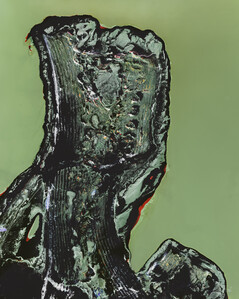Group Exhibition White Rabbit Gallery, Sydney, Australia
Centuries ago, in ancient China, Tang dynasty alchemists embarked upon a daring quest for immortality. From the seclusion of their laboratories, bewitching transformations took place upon the flames of the furnace. With a magic brew of blood-red cinnabar, glistening gold, fickle mercury, and toxic lead, they sought to concoct an elixir of eternal life. Amidst this elusive pursuit, their experiments led to the invention of fire medicine, now known as gunpowder. What began as a search for longevity unwittingly gave rise to powerful tools of destruction; the impact of which we still feel today.
Early alchemists yearned for an imperishable physical form, anchoring the Chinese concept of immortality firmly within the material realm. In modern times, the compelling artists in Laozi’s Furnace inherit their legacy by delving into material exploration. Yet instead of transmuting base metals into gold, they wonder: what else is possible? Can a tank be stitched from leather? Can shadows be crafted from clay? Can animals take on human forms? The artist’s studio, like the alchemist’s laboratory, becomes a crucible of experimentation. Pushing, pinching, cutting, and stitching—one shape metamorphoses into another, as if under a sorcerer's spell.
Matter possesses a potent allure because invisible powers often manifest in material forms. Just as wind bends trees and water shapes stone, each artwork bears the imprint of the many unseen hands at work. Bringing alchemy into the 21st-century, our artists reveal the ways of turning mind into matter, and matter back into mind.






